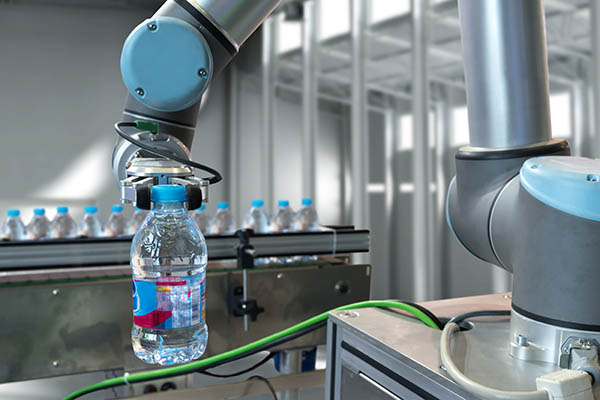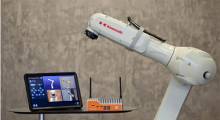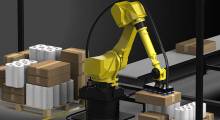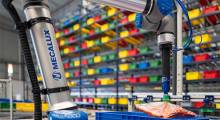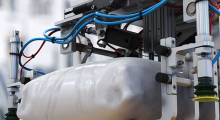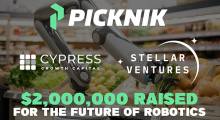A pick-and-place robot is a type of industrial robot that is used for handling and placing products on a production line. They are typically used in high-volume manufacturing settings, where they can quickly and accurately place products onto conveyor belts or other production equipment.
Picking robots are designed to automate the tasks of handling and placing products on a production line. This can include tasks such as picking up products from a conveyor belt and placing them onto another conveyor belt or piece of production equipment.
There are many types of pick-and-place robots, each with their own set of capabilities. Some pick-and-place robots are designed for use in specific industries, such as the food and beverage industry, while others are more general-purpose. Pick-and-place robots can also vary in terms of their payload capacity, or the amount of weight they can lift.
Some picking robots are also equipped with additional features, such as vision systems or grippers. Vision systems allow the robot to identify products that need to be picked up, while grippers enable the robot to grasp products.
What are the different uses of picking robots?
Pick-and-place robots can be used in a variety of settings, including warehouses and distribution centers. They are often used in high-volume manufacturing settings, where they can quickly and accurately place products. The robots can also place products into packaging, such as boxes or bags.
In addition to their use in factories, pick-and-place robots are also increasingly being used in logistics applications. In these settings, such robots can be used to load and unload trucks, sort and organize packages, and load containers onto ships.
What are the types of pick-and-place robots?
Some of the most common types robots for these operations include:
Gantry robots: Gantry robots consist of a beam that spans the width of a production line. Gantry robots are often used in high-volume manufacturing settings, where they can quickly and accurately put items on production equipment.
Articulated robots: Articulated robot arms have a series of joints that allow the robot to move in multiple directions. Articulated robots are often used in packaging applications, where they can place products into boxes or bags.
SCARA robots: SCARA robots have a horizontal arm and a vertical arm. SCARA robots are often used in assembly applications, where they can pick up and move products onto a production line.
Delta robots: Delta robots consist of three arms that are mounted on a triangular base. Delta robots are often used in packaging applications, where they can place products into boxes or bags.
There are many benefits of using pick-and-place robots, including:
-
Increased productivity: These robots can increase the productivity of a manufacturing or logistics operation by automating the tasks of handling products.
Improved accuracy: Pick-and-place robots can improve the accuracy of product placement, which can reduce errors and improve quality control.
Reduced labor costs: Robots can reduce labor costs by eliminating the need for manual handling of products.
Flexibility: Such systems can be configured to handle a wide variety of products, making them suitable for use in a variety of settings.
Improved safety: Pick-and-place robots can improve safety by eliminating the need for workers to handle products.
Applications of pick-and-place robots
Picking robots are used in a variety of settings. Some of the most common applications for pick-and-place robots include:
- Manufacturing: Pick-and-place robots can quickly and accurately place products onto conveyor belts or other production equipment.
- Packaging: Picking robots can place products into boxes or bags.
- Loading and unloading: Pick-and-place robots are used to load and unload trucks, sort and organize packages, and load containers onto ships.
- Assembly: Automated systems can put products onto a production line.
- Inspection: Grasping robots handle and inspect products for defects or irregularities.
- Testing: Robots help test products for quality or performance.
- Sorting: Pick-and-place robots sort products by size, shape, or other criteria.
- Dispensing: Some robots are designed to dispense liquids or powders onto products or into containers.
- Labeling: Robots apply labels to products or packaging.
- Palletizing: Certain robots stack products onto pallets for storage or shipping.
- Kitting: Pick-and-place robots may assemble kits of parts or products.
- Wrapping: Robots can wrap products in plastic or other materials.
- Gluing: Articulated robots apply glue or other adhesives to products.
- Sealing: They can also seal products in packaging.
- Welding: From moving and holding items to welding them together, robots are increasingly popular in metalwork.
- Cutting, folding, and shaping: Pick-and-place robots can manipulate materials such as cardboard or plastic.
- Die cutting: Like welding, robots are used to die-cut products.
- Stamping and printing: Pick-and-place robots can stamp or print on products or packaging.
Pick-and-place robots are versatile machines that can be used in a variety of settings. They offer a number of advantages, including reduced labor costs, flexibility, and improved safety. When selecting a pick-and-place robot, it is important to consider the specific needs of your operation.
About the author

Andrew Lighstead is the sales director at PWR Pack, a robotics solutions company focused on the food industry.
Editor's note: This article was republished and edited with permission from Packaging With Robots (PWR Pack).
Article topics
Email Sign Up

